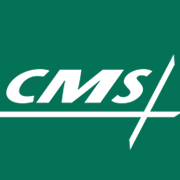CMS: Innovation Center Key to APM, MACRA Implementation Success
The CMS Innovation Center’s alternative payment models resulted in value-based care success and will be crucial for continuing MACRA implementation, a CMS leader stated.

- In a recent official blog post, CMS Acting Principal Deputy Administrator Patrick Conway, MD, highlighted the federal agency’s Innovation Center’s successes with alternative payment model development, especially as MACRA implementation continues.

“Today, based on the successful work of the CMS Innovation Center and countless public and private sector partners, we can now say that healthcare delivery system reform addressing both quality and cost has become part of the fabric of Medicare, Medicaid, and the healthcare sector nationwide,” wrote Conway.
The Congressional Budget Office recently projected that CMS Innovation Center initiatives would reduce federal healthcare spending by about $34 billion between 2017 and 2026.
But the center could face elimination or less funding if the Affordable Care Act is repealed under the upcoming Trump Administration. Some policymakers have already criticized the CMS Innovation Center for overstepping its authoritative power, including President-Elect Trump’s pick for Department of Health and Human Services (HHS) Secretary Representative Tom Price (R-GA).
In September 2016, Price and two other representatives penned a letter to CMS explaining how the federal agency cannot implement mandatory, nationwide alternative payment models, like the Comprehensive Care for Joint Replacement and cardiac care bundled payment programs, without Congressional approval.
With the CMS Innovation Center potentially on the chopping block, Conway highlighted how the center is key to MACRA implementation success similar to CMS Acting Administrator Andy Slavitt’s comments in December 2016.
Conway stated that the CMS Innovation Center is the “mechanism to create new Advanced Alternative Payment Models in the future,” while Slavitt said that “MACRA can’t work as well without a CMS Innovation Center that can move quickly to develop and expand new approaches to paying for care.”
MACRA contains the Advanced Alternative Payment Model track that qualifying eligible clinicians can use to earn a five percent value-based incentive payment in 2019. Eligible clinicians must participate in an approved alternative payment model to qualify, but only eight are currently approved for the 2017 performance year.
Many healthcare industry groups expressed disappointment with limited Advanced Alternative Payment Model options when the final MACRA implementation rule debuted in October 2016. For example, Tom Nickels, the American Hospital Association Executive Vice President, voiced concern “that CMS continues to narrowly define Advanced Alternative Payment Models, which means that less than ten percent of clinicians will be rewarded for their care transformation efforts.”
Premier Inc., a healthcare improvement company, also argued that approved Advanced Alternative Payment Model options for 2017 contained too much financial risk, which would limit participation.
Conway, however, touted that the CMS Innovation Center recently expanded Advanced Alternative Payment Model options. In addition to re-opening Comprehensive Primary Care Plus and Next Generation Accountable Care Organization model applications for 2018 participation, the center also unveiled five new alternative payment models, including cardiac and orthopedic care bundled payment programs. The center also developed the Medicare Shared Savings Program (MSSP) Track 1+, which contains less financial risk than other MSSP tracks.
With more options, CMS projects between 125,000 and 250,000 eligible clinicians to participate in an Advanced Alternative Payment Model by 2018.
The CMS leader also attributed broader value-based care transition success to the Innovation Center. For example, the federal agency met its goal of tying 30 percent of Medicare fee-for-service payments to an alternative payment model by the end of 2016 in March of that year.
CMS is also on track to hit its goal of linking 50 percent of Medicare payments to alternative payment models, many developed by the Innovation Center, by the end of 2018.
Some of the center’s initiatives that contributed to its reported success since 2010 include:
• Development of over 30 alternative payment models
• EHR and data analytics infrastructure investments
• Broader healthcare stakeholder participation, including 207,000 providers involved in alternative payment models and care delivery reforms reaching about 18 million patients under Medicare and private insurance
Looking forward, Conway added that the CMS Innovation Center plans to implement more alternative payment models in the next few years. Some of the upcoming initiatives include:
• Expanding the Medicare Diabetes Prevention Program in 2018
• Three cardiac care alternative payment models, including bundled payment programs for acute myocardial infarctions and coronary artery bypass grafts as well as a cardiac rehabilitation incentive payment program
• The surgical hip and femur fracture treatment bundled payment model
• The Accountable Health Communities Model launching in 2017
• 38 State Innovation Model initiatives to test state-based alternative payment models, such as the Vermont All-Payer Accountable Care Organization Model
In addition to improving and developing new alternative payment models, Conway also stated that CMS will continue to improve stakeholder engagement and assess demonstration results.
“Together we can continue to strive to achieve better care, healthier people, and smarter spending,” he concluded.
Dig Deeper:
• Understanding the Value-Based Reimbursement Model Landscape
• What We Know About Value-Based Care Under MACRA, MIPS, APMs
